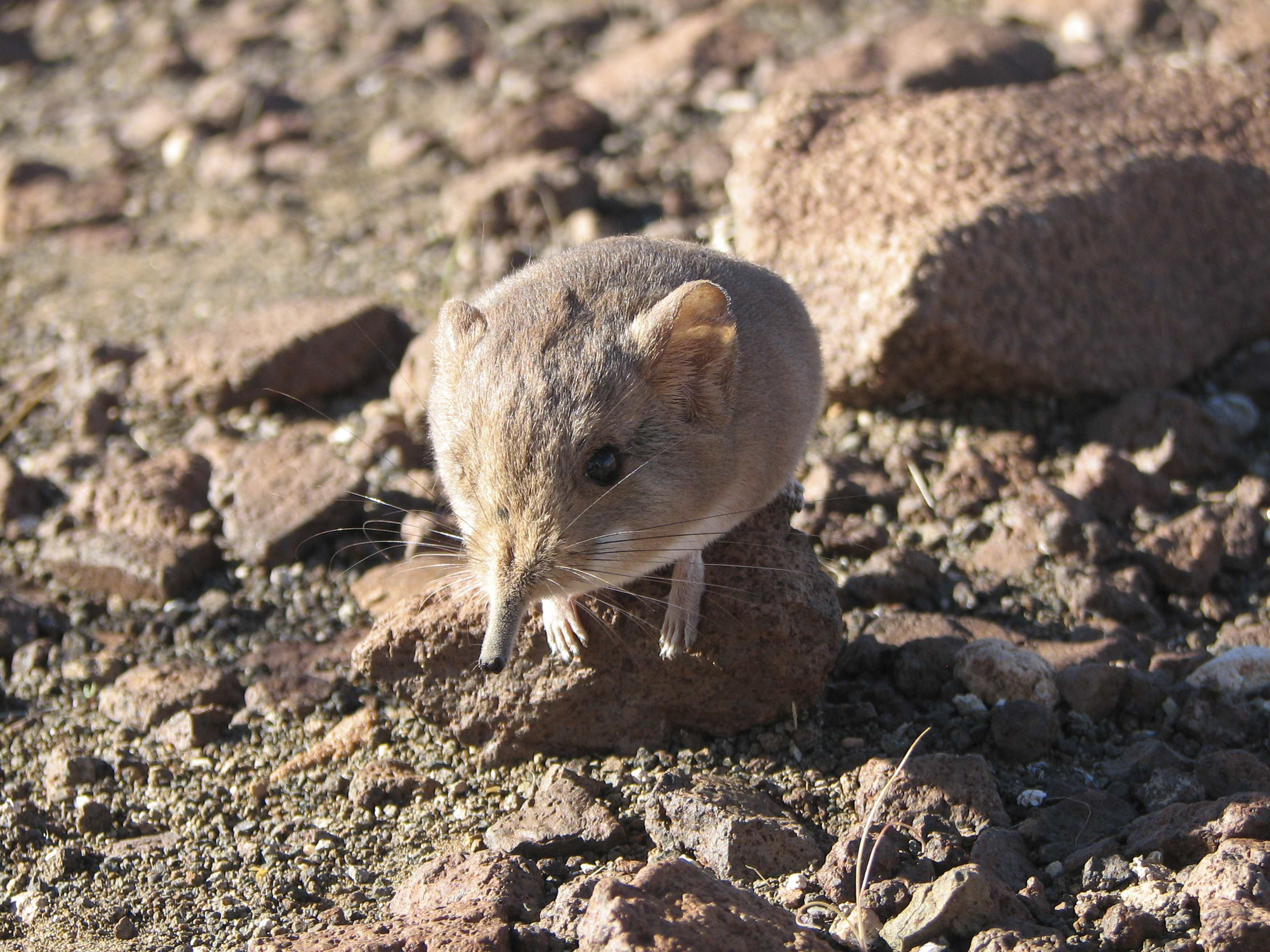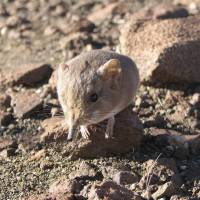A new mammal discovered in the remote desert of western Africa resembles a long-nosed mouse in appearance but is more closely related genetically to elephants, a California scientist who helped identify the tiny creature said Thursday.
The new species of elephant shrew, given the scientific name Macroscelides micus, inhabits an ancient volcanic formation in Namibia and sports red fur that helps it blend in with its rocky surroundings, said John Dumbacher, one of a team of biologists behind the discovery.
Genetic testing of the creature — which weighs up to an ounce (28 grams) and measures 7½ inches (19 cm) in length, including its tail — revealed its DNA to be more akin to much larger mammals.
"It turns out this thing that looks and acts like shrews that evolved in Africa is more closely related to elephants," said Dumbacher, a curator of birds and mammals at the California Academy of Sciences in San Francisco.
The findings, published in the Journal of Mammalogy, floored scientists, who said the only visible link between an African elephant and the diminutive shrew is its trunk-like nose.
Like an antelope, the creature has long, spindly legs relative to its body size, and hunkers down next to bushes to sleep rather than burrowing. Like an anteater, it uses its extended nose to sweep the ground in search of ants and other insects. It is prone to giving birth to twins.



















With your current subscription plan you can comment on stories. However, before writing your first comment, please create a display name in the Profile section of your subscriber account page.